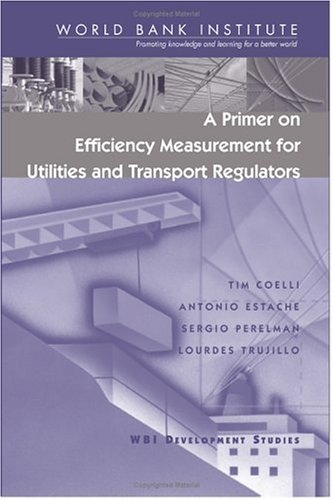WBI Development Studies
1 total work
A Primer on Efficiency Measurement for Utilities and Transport Regulators
by Tim Coelli, etc., and Et Al
Published 24 February 2003
This work provides an overview of the techniques available to regulators of recently ""privatized"" utilities and transport services to measure the various sources of inefficiencies in the firms they are required to monitor. It provides guidelines as to how to choose between these options, identifying the costs and benefits of the various approaches in the situations most relevant to regulators. It covers the measurement of efficiency in the context of a tariff revision aiming at redistributing at least some of the efficiency gains from the producers to the users. It also addresses the challenges from comparative efficiency assessments allowing the introduction of yardstick competition. The issues covered should be of interest to those regulatory authorities which are required to obtain measures of relative efficiency, and of historical productivity growth, to assist with the setting of price-caps or any of incentive based regulatory mechanism requiring the measurement of efficiency, such as yardstick competition.
